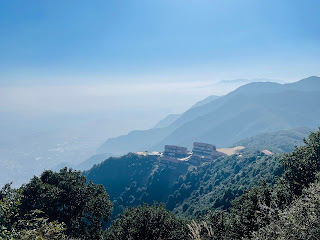In these couple of years, Nepalese have become more enthusiastic about trekking and hiking in a country known for its majestic treks and towering hills and mountains. Adventure enthusiasts witness the Himalayas's unmatched beauty in locations like Everest Base Camp, Annapurna Circuit, Api range and Langtang Valley. However, the growing trend of trekking in Nepal has also resulted in an increase in altitude sickness cases among hikers who are not accustomed to the difficulties of high-altitude conditions. To ensure a safe and sound trekking journey, it is imperative to avoid mountain sickness.
People who climb to high heights too quickly may develop mountain sickness, commonly referred to as altitude sickness. It happens when the body finds it hard to adapt to lower air pressure and oxygen levels. This condition can range from little discomfort to serious, life-threatening consequences, and it usually first appears at heights exceeding 2,400 meters (8,000 feet). For anyone going on a high-altitude trip, it is essential to comprehend the reasons, identify the symptoms, and know how to prevent or treat this disease.
The mostly mountain sickness are mild, or Acute Mountain Sickness (AMS), which presents as headaches, nausea, light headedness, exhaustion, and difficulty sleeping. If symptoms are overlooked, however, more severe types like High-Altitude Cerebral Edema (HACE) and High-Altitude Pulmonary Edema (HAPE) may emerge. While HACE results in brain swelling that confuses, severe headaches, and lack of coordination, HAPE involves fluid accumulation in the lungs that causes difficulty breathing and tightness in the chest.
Mountain sickness can be avoided with careful preparation and acclimatization. It's vital to ascend gradually so that your body can get used to the decreased oxygen levels. The risk can be considerably decreased by spending a couple of days at intermediate elevations before ascending higher. Your body needs to adjust to altitude changes by drinking plenty of water, eating a balanced, high-carb diet, and abstaining from alcohol and sedatives.
The ability of the body to adapt can be augmented by drugs like acetazolamide (Diamox) which also help with prevention. It is important to notice any symptoms in oneself or any other members of the group. If symptoms appear, you can avoid the situation getting worse by slowing your ascent and spending some time resting. Early action is essential when any discomfort is properly communicated within your group.
If symptoms of mountain sickness do appear, the best remedy is to descend to a lower elevation. Rest, water, and over-the-counter painkillers can help with mild cases. Additional oxygen might also be helpful. However, serious symptoms like disorientation, chronic chest pain, or bluish lips need to be treated very quickly requiring prompt medical support, because these may be signs of the potentially fatal illnesses HAPE or HACE.
Although high-altitude trekking provides an out-of-world experience, it also requires consideration of the environmental and physical barriers. You can ensure a safer and more fun journey by being aware of the dangers, taking safeguards, and responding quickly to symptoms. The mountains will always be waiting for you to return, and your health and safety should always come first.

Comments
Post a Comment